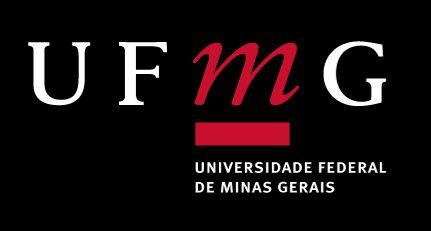Análise espaço-temporal da expansão dos plantios florestais comerciais no Brasil sob a condição de minimização de impactos negativos e potenciais conflitos
DOI:
https://doi.org/10.35699/2237-549X..13453Keywords:
Forestry, Use and change of land use, Territorial managementAbstract
The National Plan for the Development of Planted Forests - NPDP aims to strategically consolidate the forestry sector as a mean for achieving Brazil´s development goals. This policy aims to expand the current area of planted forests from 7.2 million (2015) to 10.6 million hectares (2025). The NPDP, however, does not addresses the territorial implications of establishing its goals. The policy neither specifies which type of land is targeted for fulfilling its ambitious goals nor it assesses negative impacts or potential conflicts it may raise. This work focus on developing a spatially explicit model of land use change for simulating scenarios for the expansion of commercial monocultures f of Eucalyptus and Pinus in Brazil. The model integrates macro and micro-scale components, of profitability and climatic favorability, to simulate the spatial dynamics of silvicultural systems in such a way conflicts of the new plantations with other uses are minimal and natural ecosystems are, as much as possible, preserved. The spatial allocation presented a level of accuracy of 70% that was considered adequate for the purposes of this study. The results indicated the possibility of expanding the commercial forest plantations in Brazil with the least conflict (5% overlap) with the scenario of agricultural expansion and without the need to convert natural forest ecosystems. For that, public policies are needed to effectively guide the expansion of the sector
Downloads
References
ANTONANGELO, A.; BACHA, C.J.C. As Fases da silvicultura no Brasil. RBE, Rio de Janeiro, n. 52, p. 207-238, 1998. ABRAF. Anuário estatístico 2012: ano base 2012. Brasília: Associação Brasileira de Produtores de Florestas Plantadas; 2013.
BERGER, R.; GARLIPP, R.C.D. Custo-preço: uma alternativa financeira na avaliação da produção florestal. Circular técnica 141. Piracicaba: IPEF, 1982.
BONHAM-CARTER, G. F. Geographic Information Systems for geoscientists: modelling with GIS. 1st ed. Kidlington, UK: Elsevier Science Ltd, 1994.
BRASIL. Diretrizes para a estruturação de uma política nacional de florestas plantadas. Brasília: Secretaria de Assuntos Estratégicos/Presidência da República, 2011. 104 p.
BRASIL. Decreto nº 8.375, de 11 de dezembro de 2014. Define a Politica Agricola para Florestas Plantadas. Disponivel em: <http://www.planalto.gov.br/ccivil_03/_Ato20112014/2014/Decreto/D8375.htm>. Acesso em: 18 dez. 2016. Publicado no Diario Oficial [da] Republica Federativa do Brasil em 12 dez. 2014.
BROWN, S. Opportunities for mitigation carbon emissions through forestry activities. Winrock International. Arlington, p. 1-5. 1999.
BRUIJNZEEL, L. A. Hydrological functions of tropical forests: not seeing the soil for the trees? Agriculture, Ecosystems and Environment, v. 104, p. 185-228. 2004.
CANTO, J.L.; MACHADO, C.C.; GONTIJO, F.M.; JACOVINE, L.A.G. Colheita e transporte florestal em propriedades rurais fomentadas no estado do Espírito Santo. Revista Árvore, n. 6, p. 989-998, 2006.
CASSMAN, K. G. Ecological intensification of cereal production systems Yield potential, soil quality, and precision agriculture. Proceedings of the National Academy of Sciences of the United States of America, v. 96, n. 11, p. 5952-5959, 1999.
DIAS-FILHO, M.B. Degradação de pastagens: processos, causas e estratégias de recuperação. 4. Ed. Belém: Ed. do Autor, 2011, 215p.
FAO. Planted forest in sustainable forest management: A statement of principles. Roma: Food and Agriculture Organization of the United Nations; 2010.
FAO. State of the world’s forests. Roma: Food and Agriculture Organization of the United Nations; 2011.
FERNANDES, G.W; COELHO, M.S; MACHADO, R.B.; FERREIRA, M.E.; AGUIAR, L.M.S.; DIRZO, R.; SCARIOT, A.; LOPES, C.R. Afforestation of savannas: an impending ecological disaster. Natureza & Conservação n. 14, p. 146-151, 2016.
GOODACRE, C. M.; BONHAM-CARTER, G. F.; AGTERBERG, F. P.; WRIGHT, D. F. A statistical analysis of spatial association of seismicity with drainage patterns and magnetic anomalies in western Quebec. Tectonophysics n. 217, p. 205-305, 1993.
GOUVELLO, C.; SOARESFILHO, B. S.; NASSAR, A. Estudo de baixo carbono para o Brasil: uso da terra, mudanças do uso da terra e florestas. Washington: The World Bank, 2010. 292 p.
GUEDES, I.C.L.; COELHO-JUNIOR, L.M.; OLIVEIRA, A.D.; MELLO, J.M.; REZENDE, J.L.P.; SILVA, C.P.C. Economic analysis of replacement regeneration and coppice regeneration in eucalyptus stands under risk conditions. Cerne, n. 3, p. 393-401, 2011.
HIJMANS, R.J.; CAMERON, S.E.; PARRA, J.L.; JONES, P.G.; JARVIS, A. (2005) Very high resolution interpolated climate surfaces for global land areas. International Journal of Climatology 25: 1965-1978.
IBA. Relatório Anual 2016: ano base 2015. Brasília: Indústria Brasileira de Árvores; 2016.
LIMA, L. S.; OLIVEIRA, L. J. C.; SOARE FILHO, B. S.; RODRIGUES, H. O. H. Balanço hídrico climatológico espacializado para o Brasil. XVII Congresso Brasileiro de Meteorologia, 23 a 28 de Setembro de 2012, Gramado, RS. Anais.
OGDEN, F. L.; CROUCH, T. D.; STALLARD, R. F.; AND HALL, J. S. Effect of land cover and use on dry season river runoff, runoff efficiency, and peak storm runoff in the seasonal tropics of Central Panama, Water Resources Research, v. 49, p. 1-20, 2013.
REZENDE, J. L. P., OLIVEIRA, A. D. Análise econômica e social de projetos florestais. Viçosa, MG: UFV, 2001.
RIBEIRO, A.; PAIVA, Y.G.; BAESSO, R.C.; ALMEIDA, A.Q.; OLIVEIRA, A.S.; OLIVEIRA, R.A.; HAMAKAWA, P.J.; SILVA, M.P. Eucalipto. In: Agrometeorologia dos cultivos: o fator meteorológico na produção agrícola. Monteiro, J.E. (Org.). Brasília, DF: INMET, 2009.
ROA-GARCIA, M. C.; BROWN, S.; SCHREIER, H.; LAVKULICH, L. M. The role of land use and soils in regulating water flow in small headwater catchments of the Andes. Water Resources Research, v. 47, n. 5, May 2011.
ROUNSEVELL, M.D.A.; ARNETH, A.; BROWN, D.G.; DE NOBLETDUCOUDRÉ, N.; ELLIS, E.; FINNIGAN, J.; GALVIN, K.; GRIGG, N.; HARMAN, I.; LENNOX, J.; MAGLIOCCA, N.; PARKER, D.; O’NEIL, B.; VERBURG, P.H.; YOUNG, O. (2012). Incorporating human behaviour and decision making processes in land use and climate system models. GLP Report No. 7. GLP-IPO, São José dos Campos.
SCOLFORO, J.R.S.; CARVALHO, L.M.T.; OLIVEIRA, A.D. Inventário florestal de Minas gerais: monitoramento dos reflorestamentos e tendências da produção em volume, peso de matéria seca e carbono, 2005-2007. Lavras: Editora UFLA, 2008.
SIDLE, R. C.; ZIEGLER, A. D.; NEGISHI, J. N.; NIK, A. R.; SIEW, R.; TURKELBOOM, F. Erosion processes in steep terrain: truths, myths, and uncertainties related to forest management in Southeast Asia. Forest Ecology Management, v. 224, p. 199-225, 2006.
SILVA, M. L.; JACOVINE, L. A. G., VALVERDE, S. R. Economia florestal. Viçosa, MG: UFV, 2002.
SILVA, M.L.; FONTES, A. A. Discussão sobre os critérios de avaliação econômica: valor presente líquido (VPL), valor anual equivalente (VAE) e valor esperado da terra (VET). Revista Árvore, n. 6, p. 931-936, 2005.
SILVA, M.L.; OLIVEIRA, R.J.; VALVERDE, S.R.; MACHADO, C.C.; PIRES, V.A.V. Análise do custo e do raio econômico de transporte de madeira de reflorestamentos para diferentes tipos de veículos. Revista Árvore, n. 6, p. 1073-1079, 2007.
SOARES-FILHO, B.S.; LIMA, L.S.; HISSA, L.V.; COSTA, W.L., RODRIGUES, H.O.; FERREIRA, B.M.; et al. OTIMIZAGRO: Uma Plataforma Integrada de Modelagem de Uso e Mudanças no Uso da Terra para o Brasil. Final report. Belo Horizonte (MG): Centro de Sensoriamento Remoto, Universidade Federal de Minas Gerais; Relatório nº.: 978-85-61968-04-5, 2013.
SOARES-FILHO, B. S.; PENNACHIN, C. L.; CERQUEIRA, G. DINAMICA: a stochastic cellular automata model designed to simulate the landscape dynamics in an Amazonian colonization frontier. Ecological Modelling, n. 3, p. 217-235, 2002.
SOARES-FILHO B.S.;, RODRIGUES H.O.; COSTA, W.L. Modeling environmental Dynamics with Dinamica EGO. Belo Horizonte: Centro de Sensoriamento Remoto. Disponível em: http://csr.ufmg.br/dinamica/tutorial/Dinamica_EGO_guidebook.pdf. 2009.
SOARES-FILHO, B.; RODRIGUES, H.O.; FOLLADOR, M. A hybrid analytical-heuristic method for calibrating land-use change models. Environmental Modelling & Software, n. 43, p. 80-87, 2013.
UNEP. Forests in a green economy: a synthesis. St-MatinBellevue, França: United Nations Environmental Programme; 2011.
VELDKAMP, A.; VERBURG, P.H. Modelling land use change and environmental impact. Journal of Environmental Management, n. 72, p. 1-3, 2004.
WOHL, E.; BARROS, A.; BRUNSELL, N.; CHAPPELL, N. A.; COE, M.; GIAMBELLUCA, T. W.; GOLDSMITH, S.; HARMON, R.; HENDRICKX, J. M. H.; JUVIK, J. O.; MCDONNELL, J. J.; OGDEN, F. L.: The hydrology of the humid tropics. Nature Climate Change, v. 2, p. 655-662, 2012. DOI: 10.1038/ nclimate1556.
Downloads
Published
How to Cite
Issue
Section
License
Copyright (c) 2017 Revista Geografias

This work is licensed under a Creative Commons Attribution 4.0 International License.
Os artigos desta revista obedecem a licença Creative Commons — Attribution 4.0 International — CC BY 4.0









